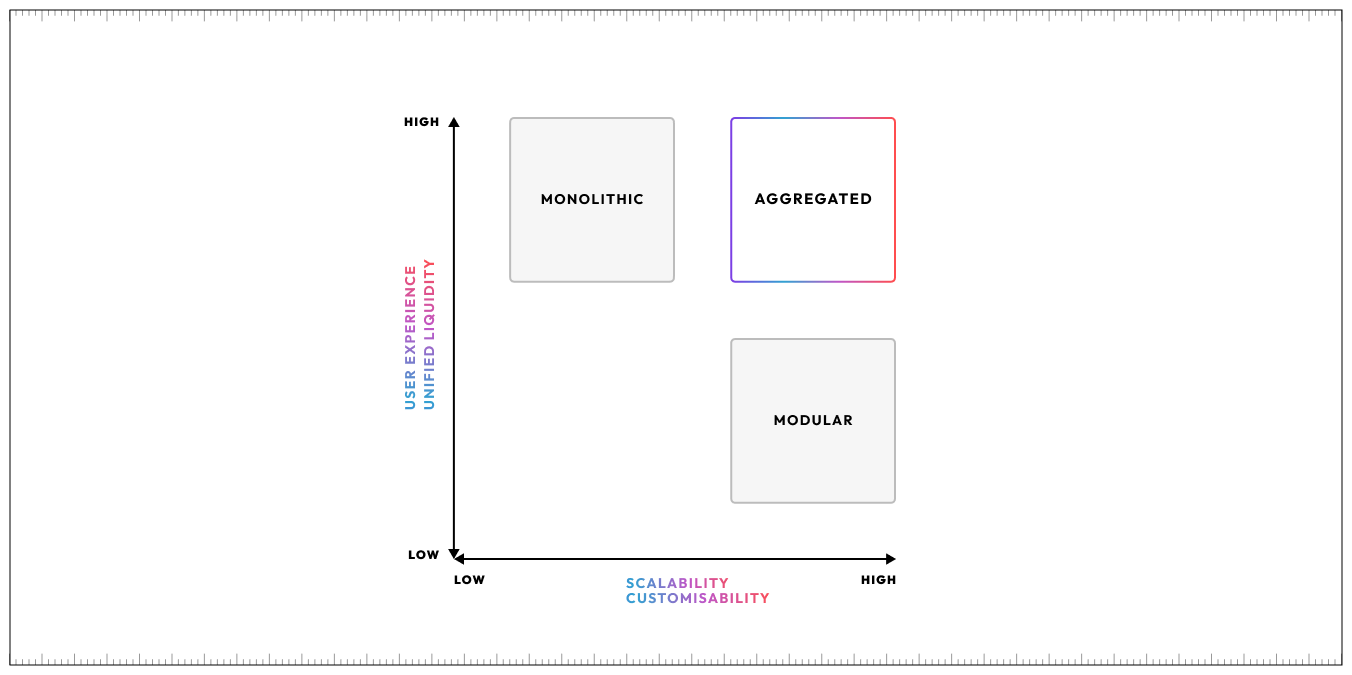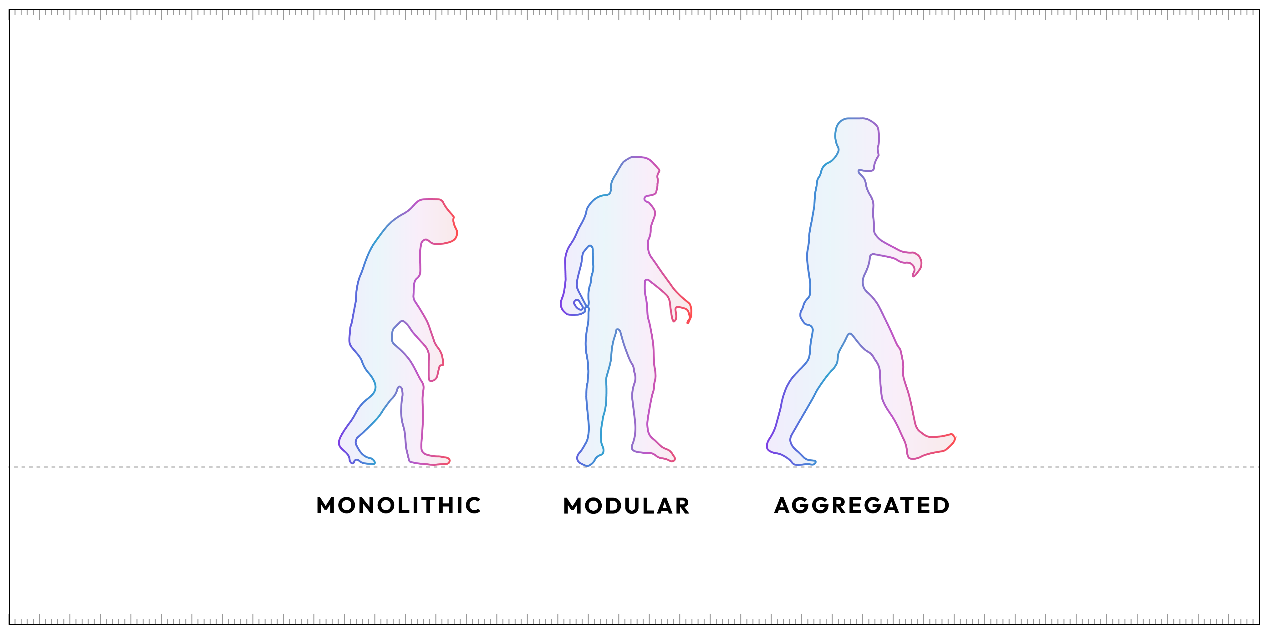Title: Polygon to Launch AggLayer Focused on Blockchain Interoperability, What are the Advantages and Use Cases?
On January 25th, Polygon Labs announced the upcoming release of version 1 of AggLayer in February, aiming to connect blockchain with ZK proofs, enabling developers to link blockchains to support unified liquidity and ensure unified security for cross-modular and single-chain (including chains within the Polygon ecosystem).
AggLayer will be a key component of the next-generation network Polygon 2.0. Unlike typical interoperability solutions, AggLayer will aggregate ZK proofs from all connected chains. PANews takes you through the advantages and use cases of AggLayer.
Key Points:
- Single Chain → Modular → Aggregated
- AggLayer integrates the advantages of using ZK technology for integration (single chain) and modular architecture
- AggLayer brings unified security and composability to aggregated chains without sacrificing sovereignty
- Developers can connect any L1 or L2 chain to AggLayer, building a single chain with unified liquidity and almost infinite scalability

The current blockchain is not a unified, highly scalable network. Due to dispersed liquidity and states, users face scalability limitations and poor user experience. The increasing number of new blockchains further complicates the issue. This environment is reminiscent of the pre-Internet era, isolated and lacking interoperability. As for the next development stage of blockchain, looking back at the history of blockchain architecture, it is not difficult to find that aggregated blockchains may be the answer.
Single Chain and Modularization
A single chain is run by nodes responsible for consensus, data availability, and execution, and also serves as a settlement layer. Such an ecosystem is designed to be unified and interoperable, but it has fundamental limitations. As scalability increases, the hardware requirements of validators also increase, leading to higher centralization and reduced security. Even the most efficient blockchains will eventually lead to state bloat (storing too much data) and state contention. This means that the performance of the chain will decrease over time. In addition, a single chain cannot provide meaningful customizability or sovereignty for ecosystem participants.
To address these challenges, developers began to patch the modular architecture, for good reason: modular frameworks solve many inherent problems of single-system chains, allowing many chains to run independently and in parallel, each maintaining sovereignty, allowing for higher scalability and diversity in chain design.
However, as an evolution of a single chain, modularization itself leads to liquidity and user dispersion, creating a multi-chain ecosystem that either requires cumbersome and inefficient bridging or sacrifices chain sovereignty. Therefore, due to liquidity and user dispersion, large-scale adoption will not occur.
Aggregation

Aggregation provides the sovereignty and scale of a modular architecture, as well as unified liquidity and user experience for the system, integrating these two approaches into a completely new state. The decentralized protocol AggLayer unifies a dispersed blockchain environment into a network composed of ZK-protected L1 and L2 chains, with the main tasks being:
- Aggregating ZK proofs from all connected chains
- Ensuring the security of near-instant cross-chain atomic transactions
Advantages
As a core component of Polygon 2.0, AggLayer will use ZK proofs to create a seamless aggregated environment, feeling like a single chain—even as each chain in the ecosystem maintains sovereignty.
This achieves near-instant atomic cross-chain transactions, unifying liquidity across the entire ecosystem, improving capital efficiency, and significantly enhancing user experience.
For L1 and L2 chains connected to AggLayer: Maintain full sovereignty, but can also tap into a unified liquidity pool, guiding liquidity.
For dApp developers: Aggregation covers users. Even if the dApp is on different chains, users from other chains can interact with it without cumbersome bridging. Seamless cross-chain transactions mean real growth and access for aggregated network users.
For end users: User experience is like the internet, without cumbersome and frequent bridging. In the final state of AggLayer, end users will be able to execute cross-chain atomic transactions in less than 1 second.
Use Cases
Through AggLayer, user X1 holding DAI can purchase NFTs on Polygon zkEVM without needing to bridge funds to Polygon zkEVM(Note: OKX and Polygon Labs recently launched a ZK Layer2 network called "X1"_). From the end user's perspective, it feels like using a single chain, allowing users to interact with dApps without knowing they are accessing another chain.
Users can also send assets to participate in activities on another chain. For example, if Alice is on a gaming chain built using Polygon CDK and connected to AggLayer, and she also has ETH and DAI in her wallet on the gaming chain, she wants to put them into a DEX on X1. Alice can create a transaction bridging DAI and ETH, call the function to LP these tokens from the gaming chain (and pay all fees).
In the future, AggLayer v2 will support asynchronous cross-chain transactions, expected to be released later this year.
Polygon mainly operates on ZK-Rollups sidechains and the Layer2 network Polygon zkEVM, and provides a software development kit called CDK. Many Layer2 networks are developed using this CDK, including Immutable, OKX, Astar, Canto, Palm Network, Aavegotchi, and IDEX. AggLayer is expected to facilitate the integration of all these chains under Polygon 2.0.
Source: Polygon Labs, The Block
Related Reading: Single Chain vs Modular Blockchain: How do Ethereum, Solana, and Celestia Compete?
免责声明:本文章仅代表作者个人观点,不代表本平台的立场和观点。本文章仅供信息分享,不构成对任何人的任何投资建议。用户与作者之间的任何争议,与本平台无关。如网页中刊载的文章或图片涉及侵权,请提供相关的权利证明和身份证明发送邮件到support@aicoin.com,本平台相关工作人员将会进行核查。




